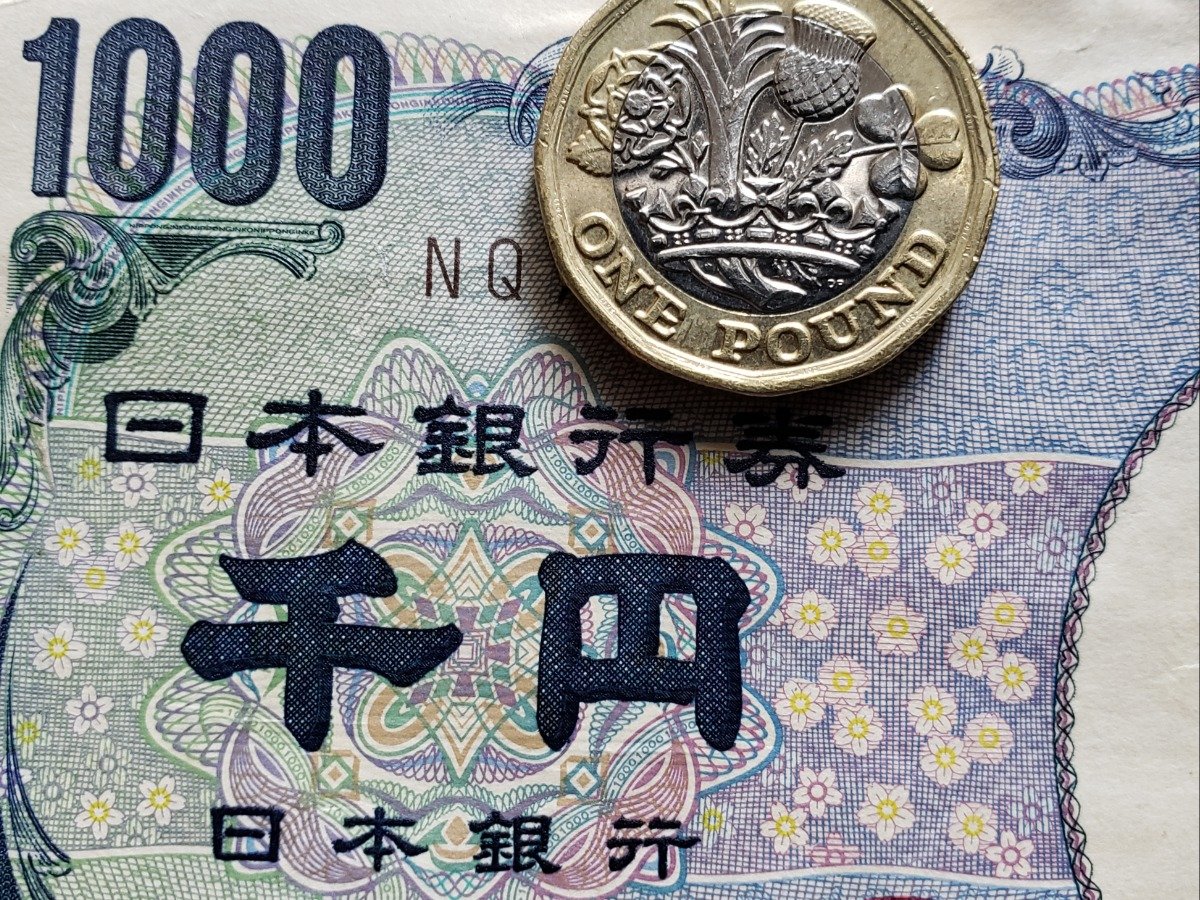8-Year High As AI Frenzy Sees Nvidia Hits $2 Trillion


The Pound to Yen exchange rate (GBP/JPY) has surged to fresh 8-year highs just above the 191.0 level.
According to Credit Agricole; “Provided that global market conditions remain supportive, the GBP should remain an attractive investment currency for FX carry trades funded in CHF and JPY in the near term.
There will, however, be a sharp setback if equities come under heavy pressure.
ING expressed caution; “we believe high-beta currencies are looking expensive in the very short run. The prospect of unstable risk sentiment and a dollar leg higher ahead of next week’s PCE points to downside potential.”
There was a powerful rally in US equities overnight with the S&P 500 index strengthening 2.1% to a fresh record high and registering the largest one-day gain for 13 months while the Nasdaq index jumped close to 3.0% on the day.
Gains in US equities have underpinned risk appetite which tends to undermine the yen.
Expectations of interest rate cuts in North America and Europe has also continued to fade.
In this environment, markets are more confident that global yields will stay higher for longer and overall market demand for carry trades has continued to increase.
In carry trades, funds buy currencies such as the Pound and these are funded by selling low-yield currencies such as the yen.
 Firm risk conditions have also underpinned the Pound, especially with UK base rates above 5.00%.
Firm risk conditions have also underpinned the Pound, especially with UK base rates above 5.00%.
Bank of Singapore strategist Moh Siong Sim commented; “There’s a focus on carry while we’re in a range-bound environment.”
He also noted that the yen has been damaged by last week’s data showing an unexpected slide into recession in Japan.
Another important element is that overall exchange rate volatility has declined to very low level.
With low volatility, investors are also more confident in engaging in carry trades.
Bank of America commented; “With Deutsche Bank’s foreign exchange volatility collapsing to two-year lows and markets backpedalling on bets for deep rate cuts in the U.S., Europe and Britain – leaving yields elevated – the trade is profitable.”
As far as Bank of Japan (BoJ) policy is concerned, there are expectations that there will be a more to remove negative interest rates relatively soon with a focus on the April policy meeting.
A BoJ tightening could support the yen at least in a knee-jerk reaction, although there would still be adverse interest rate differentials.
According to BoA; “We believe the Bank of Japan (BoJ) will raise rates to zero and stop yield targeting in April. However, this should be already in the price. For the dollar/yen to weaken, we need the Fed to start cutting rates.”
The UK data on Friday failed to provide further Pound support with the latest GfK consumer confidence data registering a small decline for February.
The overall Bank of England rhetoric has been slightly more dovish this week.
ING commented; “In fact, recent comments by MPC members have not leaned to the hawkish side. Earlier this week, Governor Andrew Bailey endorsed expectations of easing this year and reaffirmed that inflation does not need to fall back to target before the BoE can cut. The two most dovish MPC names, Ben Broadbent and Swati Dhingra said easing is likely and that there is a risk of overtightening.”
Nevertheless, there is still likely to be resistance to near-term interest rate cuts, especially as the overall UK data flow has been more positive and the economy should grow in the first quarter.
MUFG added; “The data also revealed some signs of upward pressure on prices again with the input price index increasing to the highest level since last August while output prices increased to the highest level since July. The data will only encourage the BoE to hold off and assess factors like shipping container traffic to assess whether supply constraints are returning and could impact inflation more notably than expected.”
Source link





